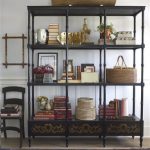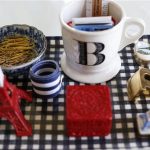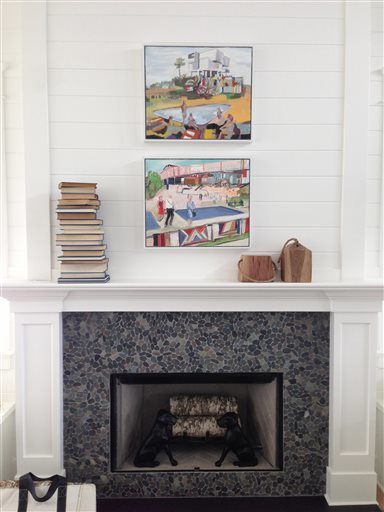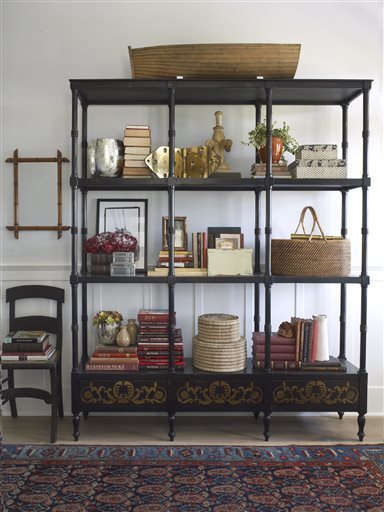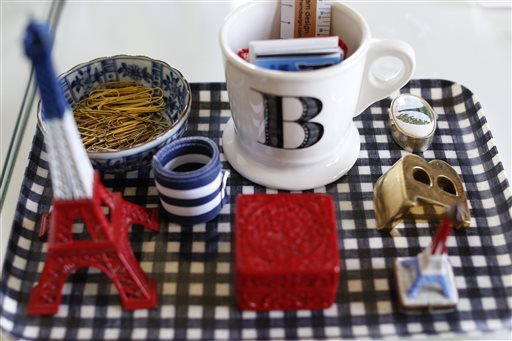No matter his client’s taste or budget, interior designer Brian Patrick Flynn follows this rule: For every large, manufactured item that he adds to a room, he also includes three handmade pieces.
They might be anything from “patchwork pillows and hand-woven throw rugs to a repurposed object made into a table lamp,” he says.
They could be expensive or totally affordable.
The key is they were made by a person, not a machine.
“Handmade objects have become more and more in demand over the past 10 years,” says Flynn, of Flynnside Out Productions. “People seem to really love the story behind how things are made,” and they want their homes to have the meaning and character that handmade pieces evoke.
With flea market and craft fair season in full swing, we’ve asked Flynn and two other interior designers — Betsy Burnham of Los Angeles’ Burnham Design and Dan Faires, host of HGTV’s “Dan Made” — what kinds of handmade items they seek, where to find them and how to use them in decorating any space.
———
WHAT WORKS
It’s easiest to start small, with handmade accessories. The items on your coffee table might include hand-thrown pottery or hand-painted trays, side-by-side with books and other mass-produced pieces. Handmade candle holders and pillows are also easy to find, as are little sculptures and other small pieces of handmade art.
“Any accessory collection should include organic or handcrafted items because, honestly, who wants shelves full of manufactured knickknacks?” asks Burnham.
Going a bit bigger, pottery lamp bases are great additions to any room, says Burnham, as are handmade quilts and knit throws.
Flynn likes to have one or two handmade fabrics in every room — for instance, the artisanal fabric of Zak and Fox, which Flynn says “look like they were made by tribes hundreds of years ago, but somehow they also seem modern.”
Faires suggests custom-made lighting: “There is so much bad lighting on the market these days, so this is an area where I like to customize the piece to fit the style of the space. You can get so much bang for your buck with a handmade light fixture in any space.”
If you’re looking to add a large handmade piece to a room, such as a table, reach out to local carpenters for price quotes based on your specifications.
———
WHERE TO FIND IT
Flea markets and craft fairs are perfect places to buy handmade or just browse for ideas. And the Internet, of course, has made finding handmade items easy year-round: Etsy.com and UncommonGoods.com are two popular sites, but a quick online search will likely turn up information about local crafters in your area, too.
When you find something, try to discover a bit about its history. Burnham’s clients enjoy handmade items more “when they know the provenance and the story behind a piece,” she says. They get a further boost knowing they’re supporting a particular artist or artisan.
Handmade pieces also can speak directly to your history. Ask around for local painters and photographers whose work captures the region where you live, then see whether their work speaks to you. “These are the items that become the focal point and conversation pieces in the room,” Faires says.
———
HOW TO USE HANDMADE DECOR
Flynn loves to place objects made from stone or other materials with “organic imperfections” on smooth, machine-perfect surfaces. “When I’ve got pristine bookshelves to display interesting things,” he says, “I love the juxtaposition of a fluid, biomorphic shape with rough texture against something rigid and linear. That creates visual tension, something designers use to add depth.”
You can also magnify the appeal of something traditional — a classic fireplace mantle, for example — by hanging a colorful, whimsical piece of handmade art over it.
Or make your own partially handmade piece by adding your creativity to a factory-made piece of furniture.
“While I’d prefer all seating and beds in my house to be handmade by artisans, sometimes manufactured items are just more affordable and ready right away,” Flynn says. “To make these things a bit more personalized, I’ll add something unique to them, like hand-blocked wallpaper to the back of bookshelves or locally crafted sconces to a wall covered in 50-cent white subway tile from the home improvement store. It’s all about the mix.”
Even lower-end manufactured items can take on high-end style with a bit of handmade assistance. “I have Ikea cabinetry in almost every house I’ve designed because it’s practical. However, I make the ready-made drawer and door fronts seem more custom by installing forged-iron or antique-brass hardware made by local artisans,” Flynn says.
———
EXTRA BENEFITS
Going handmade means you can get exactly what you want and need. “With the rise in popularity of artisan goods, interior designers have a much broader palette,” Faires says.
You also may get higher quality if you go handmade.
“Honestly, most mass-produced wood furniture items are poorly manufactured,” says Faires, who builds custom furniture for clients. “I always encourage clients to think long-term. Purchasing solid, handcrafted goods that are timeless is a much better investment.”

